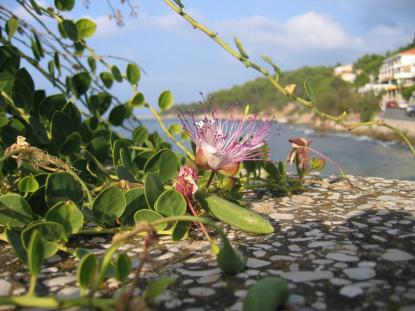|
|
Address: 9700, Szombathely II. Rákóczi Ferenc u. 6-8.
Phone number: (94) 501-709, (30) 311-8794
E-mail: iseumsavariense@gmail.com
Opening hours: Tue-Sun 10-17
|
|
Ticket for adults
|
1600 HUF
|
|
|
Group ticket for adults
(min. 15 people)
|
1200 HUF
|
/ / capita
|
|
Ticket for students
|
800 HUF
|
|
|
Group ticket for students
(min. 15 people)
|
600 HUF
|
/ / capita
|
|
Ticket for pensioners
|
800 HUF
|
|
|
Group ticket for pensioners
(min. 15 people)
|
600 HUF
|
/ / capita
|
|
Ticket for families
|
2400 HUF
|
/ family
|
|
Guide
|
6000 HUF
|
|
|
Guide
|
8000 HUF
|
|
|
Photography
|
7000 HUF
|
People living in the Carpathian Basin have been trying to get in touch with areas by distant seas. That long distance trade route from the Baltic Sea coast of the Alps has been used for thousands of yearsmoving south along the foothills, it reached the the Adriatic Sea. The road was called the 19th-century scholar posterity by the name Amber Road as the sale of "the gold of the north" meant for long the main contact between the far north and the Mediterranean.
The Romans gave gifts and clothing in exchange for the golden glittering stones, in addition to luxury: olive oil, olives, wine, fish sauce and oyster transported to the ports at the north Adriatic . These products were perishable therefore barely any survived for us, only desk sets, pottery and glassware that were used in serving them as well as typical "wrapping" for the amphora were unearthed during the excavations. All these are not only valuable and impressive works of art  shown in the exhibition showcases. With them we can delineated the lifestyle of the Romans who once lived in this region
shown in the exhibition showcases. With them we can delineated the lifestyle of the Romans who once lived in this region
as well as their net of relations. It is because trade meant culture and lifestyle as well. A piece from the Mediterranean world, Roman towns which flourished by the Amber Road, among them the first Savaria
got the most of it.
the exhibition Iseum Savariense characteristic plants of the Adriatic coast come to life. By courtesy of the Szombathely based Evergreen Gardening we may wonder at the symbols of the Mediterranean, the evergreen plants, laurel, olive and peers. Even more, in the atmosphere reminding the visitors of Ancient Iseum
this summer real slim cypresses and palms reminding us of the Mediterranean cultural landscape will find their home, in addition to various fruits such as lemon, orange and pomegranate, even other surprises as well!
